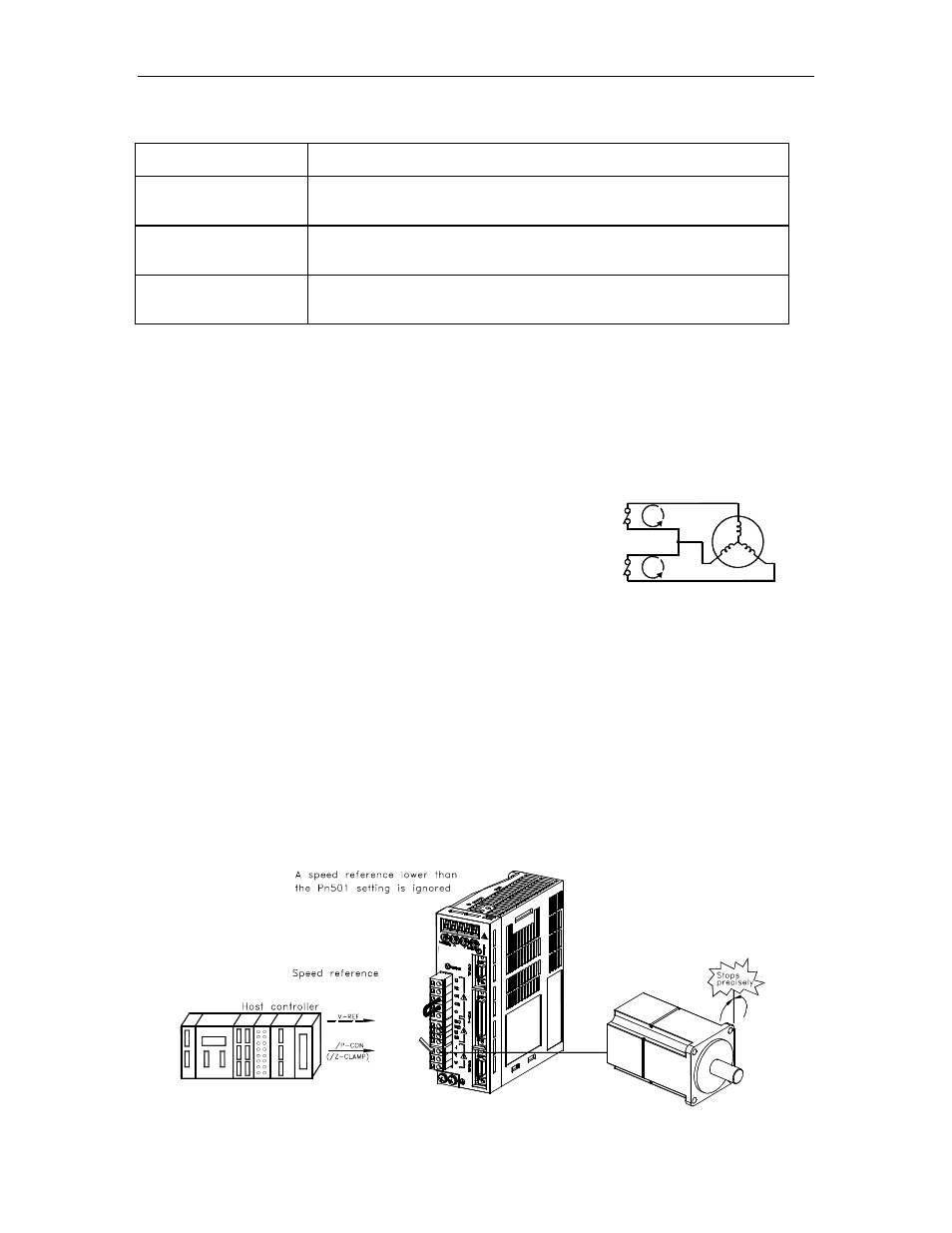Using the zero clamp function – Yaskawa FSP Amplifier User Manual
Page 123

FSP Amplifier User’s Manual
Chapter 5: Parameter Settings and Functions
5-56
Specify the Stop mode as one of these options.
Pn001.0 Setting
Result
0
Uses the dynamic brake to stop the servomotor.
Maintains dynamic brake after the servomotor stops.
*
1
Uses the dynamic brake to stop the servomotor.
Releases dynamic brake after the servomotor stops, and the servomotor
coasts to a stop.
2
Coasts the servomotor to a stop.**
The servomotor is turned OFF and motion stops due to equipment friction.
Note:
* If the servomotor is stopped or moving at extremely low speed, it will coast to a stop.
** When the main power supply is turned OFF for the following servo amplifiers, the DB circuit is turned
ON when the control power supply is OFF:
30 to 1500W for 200 V
2.0 to 3.0kW for 400 V
If the DB circuit needs to be turned OFF when the main power supply or the control power supply is OFF,
disconnect the servo amplifier’s wiring (U, V, and W).
Note:
The dynamic brake is an emergency stop function. Do not repeatedly start and stop the servomotor using the
servo ON signal (/S-ON) or by repeatedly turning power ON and OFF.
Note:
The dynamic brake (DB) is a common way of quickly stopping a
servomotor by electrically shorting its electrical windings.
The DB circuit is incorporated into the servo amplifier.
FSP Am plifier
Servom otor
5.4.3. Using the Zero Clamp Function
Zero Clamp Function
The zero clamp function is used for systems where the host controller does
not form a position loop for the speed reference input. In other words, this
function is used to stop and lock the servomotor even when the input
voltage of speed reference V-REF is not 0 V. An internal position loop is
temporarily formed to clamp the servomotor within one pulse when the
zero clamp function is turned ON. Even if the servomotor is forcibly
rotated by external force, it will still return to the zero clamp position.